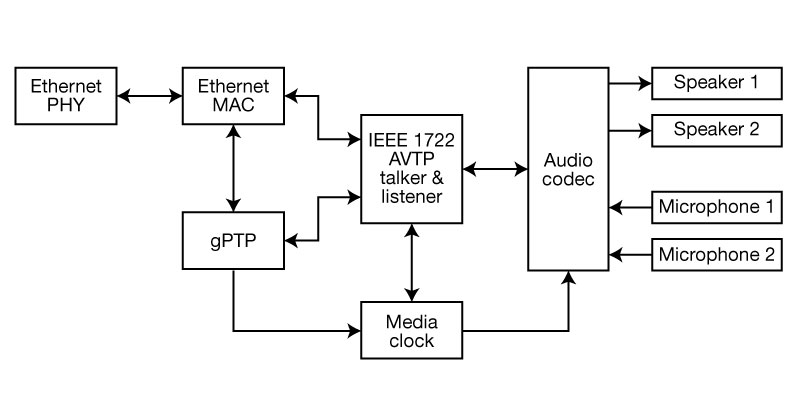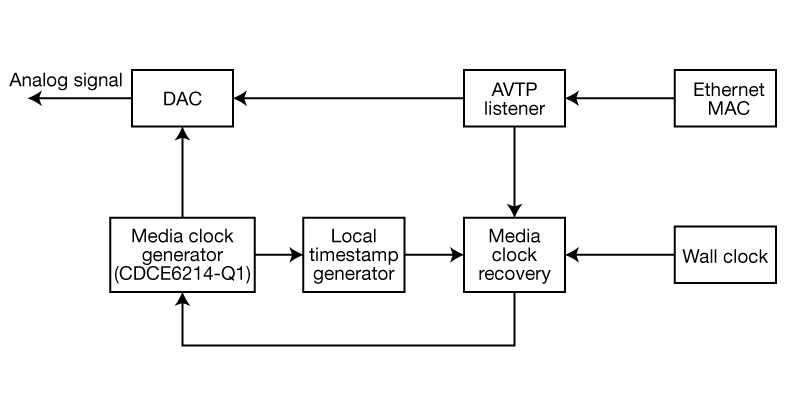-
Optimizing eAVB for Automotive Applications Using Clock Generators
Optimizing eAVB for Automotive Applications Using Clock Generators
Confidence Udegbue
According to a study from the U.S. Department of Transportation1, the average American spends the equivalent of just under 2 1/2 weeks behind the wheel every year. The longer drivers and passengers spend in cars, the greater their need for real-time data transmission and in-vehicle entertainment.
Consequently, premium audio is becoming one of the biggest growth areas for automotive infotainment systems such as automotive head units, with audio-video bridging (AVB) a key focus area. This article explains how to optimize eAVB through clocking solutions to enable high-speed data transmission in vehicles.
Ethernet AVB (eAVB) standards
Six standards from the Institute of Electrical and Electronics Engineers (IEEE) define the implementation of AVB: 802.1AS, 802.1Qat, 802.1Qav, 802.1BA, 802.1Q and 1722. These standards help engineers enable the transmission of audio and video content over Ethernet in real time with reduced latency that other protocols may not be able to assure, and allow Ethernet networks to stream high-bandwidth audio/video data in a time-synchronized manner by:
- Avoiding packet losses caused by high network traffic.
- Keeping packets from bunching and delivering packets with bounded latency.
- Time-synchronizing to a global clock to ensure alignment to a master clock.
- Producing time-aware packets.
Synchronization in eAVB
An AVB implementation in automotive systems should include:
- Common time referencing so that multiple events can trigger simultaneously.
- Synchronizing all media clocks in the media domain so that the analog-to-digital converters and digital-to-analog converters that deal with a designated stream can have the exact same sampling rate.
Optimizing media-domain synchronization requires a clocking solution with frequency-margining capability such as the CDCE6214-Q1, which is a compact and ultra-low-power programmable clock generator that supports output frequency tuning and has a step size less than 1 ppm.
A typical AVB network, as shown in Figure 1, consists of three main components:
- AV bridges: A relay device that conforms to IEEE 802.1BA.
 Figure 1 Example of a Typical AVB Network
Figure 1 Example of a Typical AVB Network - End stations (as shown in
Figure 2): A talker, listener or both. A talker is an end station that is the
source, transmitter or producer of a stream. A listener is an end station that
is the destination, receiver or consumer of a stream.
 Figure 2 AVB End-station Block
Diagram – Talker and Listener
Figure 2 AVB End-station Block
Diagram – Talker and Listener - Local area network (LAN): An interconnect for bridges, talkers and listeners.
Clocks (generators) for synchronization in eAVB
Media clock sources can be simple, free-running local oscillators because the media clock does not need to lock to any reference, as long as all media clocks in the same domain are frequency-synchronized. The media clock signal goes into a local timestamp generator that generates timestamps every certain number of clock rising edges. These timestamps are generated based off of a local time reference. The wall clock, as shown in Figure 3, then translates the local time-based timestamps to generalized precision time control (gPTP) timestamps. The audio/video transport talker (AVTP) adds a fixed offset and generates presentation timestamps.
The AVTP presentation time represents the gPTP time at which a designated media sample or event transfers to the time-sensitive application within each listener. This enables multiple listeners to present data at the same time, regardless of their location in the network. The AVTP tells a listener when to start processing (that is, playing) the stream’s data, and is also used to recover the stream’s media clock.
 Figure 3 Simplified Block Diagram of an AVB Talker
Figure 3 Simplified Block Diagram of an AVB TalkerFigure 4 depicts how to use presentation time to recover the stream’s media clock.
 Figure 4 Simplified Block Diagram of an AVB Listener
Figure 4 Simplified Block Diagram of an AVB ListenerFigure 4 shows how a listener extracts presentation timestamps and recovers the source media clock from the incoming stream generated by a talker. The time difference between two presentation timestamps divided by the number of samples in between gives you an estimate of the source media clock in the gPTP time base. Continually performing this calculation and applying appropriate filtering techniques yields an accurate measurement of the source’s media clock period.
Similarly, it is possible to timestamp the local media clock generator’s output with a local time base that is then translated to a gPTP time base in order to accurately measure its period. After comparing the two clock periods, the media clock recovery module continually generates commands to incrementally increase or decrease the output frequency of the clock generator, thus synchronizing the local media clock to the source media clock.
Conclusion
Synchronization for common time referencing is important in eAVB implementations in order to avoid packet loss, bunching and latency caused by high network traffic. As drivers and passengers continue to spend more time in their vehicles and demand more high-speed data transmission, reliable clocking solutions with frequency-margining capability can help optimize both media clock generation and synchronization. The CDCE6214-Q1 is an example of a reliable clocking solution with a frequency-adjustable phase-locked loop that can be used for media clock generation and synchronization. To learn more about AVB system architecture and media clock synchronization design with the CDCE6214-Q1, read the application report, “eAVB Media Clock Synchronization Using CDCE6214-Q1.”
Citations
- United States Department of Transportation. (2017). How Much Time Do Americans Spend Behind the Wheel?
IMPORTANT NOTICE AND DISCLAIMER
TI PROVIDES TECHNICAL AND RELIABILITY DATA (INCLUDING DATASHEETS), DESIGN RESOURCES (INCLUDING REFERENCE DESIGNS), APPLICATION OR OTHER DESIGN ADVICE, WEB TOOLS, SAFETY INFORMATION, AND OTHER RESOURCES “AS IS” AND WITH ALL FAULTS, AND DISCLAIMS ALL WARRANTIES, EXPRESS AND IMPLIED, INCLUDING WITHOUT LIMITATION ANY IMPLIED WARRANTIES OF MERCHANTABILITY, FITNESS FOR A PARTICULAR PURPOSE OR NON-INFRINGEMENT OF THIRD PARTY INTELLECTUAL PROPERTY RIGHTS.
These resources are intended for skilled developers designing with TI products. You are solely responsible for (1) selecting the appropriate TI products for your application, (2) designing, validating and testing your application, and (3) ensuring your application meets applicable standards, and any other safety, security, or other requirements. These resources are subject to change without notice. TI grants you permission to use these resources only for development of an application that uses the TI products described in the resource. Other reproduction and display of these resources is prohibited. No license is granted to any other TI intellectual property right or to any third party intellectual property right. TI disclaims responsibility for, and you will fully indemnify TI and its representatives against, any claims, damages, costs, losses, and liabilities arising out of your use of these resources.
TI’s products are provided subject to TI’s Terms of Sale (www.ti.com/legal/termsofsale.html) or other applicable terms available either on ti.com or provided in conjunction with such TI products. TI’s provision of these resources does not expand or otherwise alter TI’s applicable warranties or warranty disclaimers for TI products.
Mailing Address: Texas Instruments, Post Office Box 655303, Dallas, Texas 75265
Copyright © 2023, Texas Instruments Incorporated